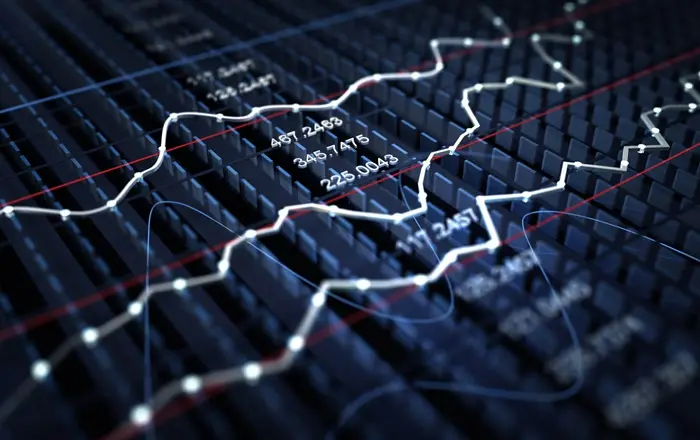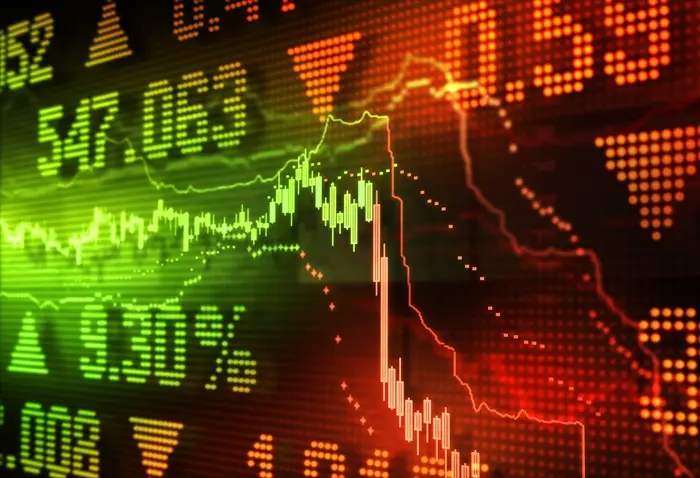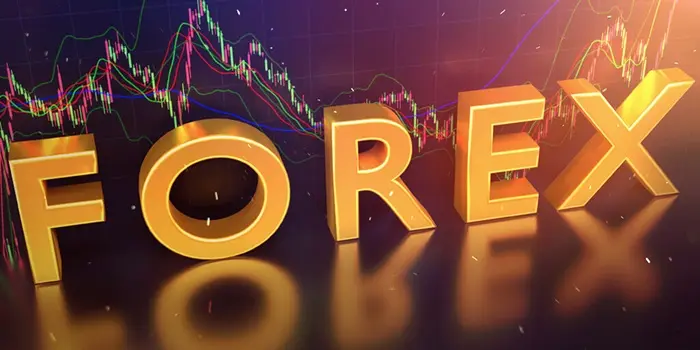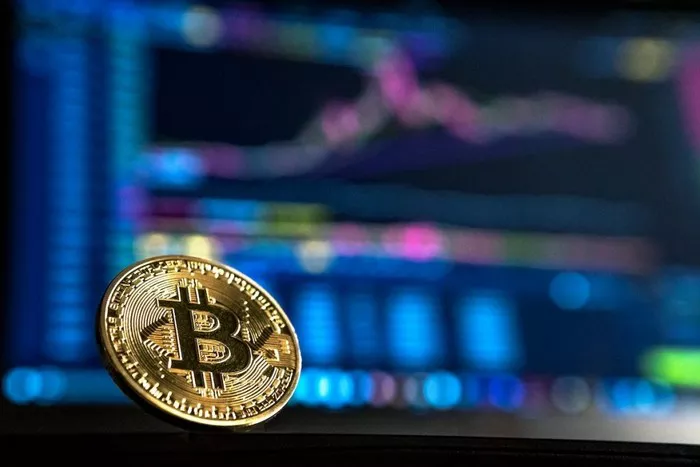U.S. stock futures plunged late Sunday after two sessions of selling wiped out more than $5.4 trillion in market value. Stocks opened sharply lower on Monday, with the S&P 500 falling to the brink of a bear market – down 20% from its peak, an ominous sign for investors and the economy as a whole.
Dow futures fell 1,250 points, or 3.3%. S&P 500 futures fell 3.7% and Nasdaq futures fell 4.6%. Asian stocks plunged: Japan’s Nikkei opened 8% lower.
U.S. oil prices fell more than 3%, falling below $60 a barrel for the first time since April 2021. Oil prices have been in free fall as investors worry that tariffs could push the global economy into a recession, undermining demand for flights, shipping, transportation and travel – all activities that require fuel.
Bitcoin also fell 5.6% to $78,736.93. Bitcoin prices surged above $100,000 shortly after Trump was elected on hopes he could help boost support for the cryptocurrency.
The sharp drop in futures comes after the stock market had its worst two days in five years since the pandemic began. Markets have rejected President Donald Trump’s massive tariff regime, some of which took effect early Saturday morning and even higher tariffs set to roll out Wednesday morning. China hit back hard on Friday, slapping a 34% tariff on all U.S. goods, raising concerns about an escalating and damaging trade war.
Trump told reporters aboard Air Force One on Sunday night that he did not intentionally crash the market but declined to predict how markets would trade in the future.
“What’s going to happen in the market? I can’t tell you,” Trump said. “But I can tell you that our country has become stronger and will ultimately be a unique country.”
Market analysts say the investor sell-off is not over yet.
“The brutal selling pressure seen last week is expected to continue on Monday as markets tell us that investors remain unclear about the impact of tariffs, tariff retaliation and fear that economic growth could slow to a complete standstill or into recession,” said James Demmert, chief investment officer at Main Street Research.
Tariffs take effect. More on the way
A broad tariff took effect on Saturday after Trump signed an executive order earlier this week imposing a base tax on all imports. The announcement sparked an outcry from U.S. trading partners, allies and foes alike, as well as U.S. businesses, investors and consumers.
On Wednesday, the U.S. will impose significantly higher “reciprocal” tariffs on nearly 90 countries with the largest trade imbalances with the U.S.
Trump has also imposed tariffs on cars, steel and aluminum. He has slapped 25% tariffs on certain goods from Canada and Mexico.
And there are more tariffs on the way: Tariffs on auto parts will take effect no later than May 3. Trump has also threatened tariffs on products including lumber, pharmaceuticals, copper and microchips.
The Trump administration has sent mixed messages about whether tariffs are negotiable.
“Tariffs are coming. (Trump) announced it, and he wasn’t kidding. Tariffs are coming. Of course they are,” Commerce Secretary Howard Lutnick said Sunday on CBS’ “Face the Nation.”
But Trump said he had been taking calls from tech executives and world leaders about tariffs over the weekend, and said during those calls: “They’ve been very friendly.”
“I’ve talked to many countries. They all want to do it, so you can understand the power of what I’ve done. Every country has called and been very enthusiastic, very, very friendly, very friendly,” he added.
Trump, who has long cast himself as a dealmaker, laid out what would take to get a tariff deal with China, in part saying “they have to fix their trade surplus.”
“I’m willing to deal with China, but they have to fix their surplus,” he said. “We have a huge deficit problem with China.”
The president also said he wants to fix the deficit with the European Union and is willing to negotiate if the European Union is willing.
“I do want to work with the European Union and others to address our deficit with China, and they have to do the same. If they want to talk about it, I’m willing to talk about it,” he said.
Market Chaos
Fears of a recession have gripped Wall Street in recent days. JPMorgan analysts said last week that the tariffs would raise taxes on Americans by $660 billion a year – the largest tax increase in recent years (and far more than expected). It would also lead to higher prices, with the consumer price index, a measure of U.S. inflation that has struggled to fall in recent years, rising 2%.
If Trump maintains the massive tariffs announced on Wednesday, his unprecedented trade policies could cause a recession in the U.S. and the global economy by 2025, JPMorgan analysts said. JPMorgan analysts raised the risk of a recession to 60% on Thursday, while Goldman Sachs last week raised the probability of a recession in the next 12 months to about 35%.
The Dow Jones Industrial Average closed in correction territory on Friday, down more than 10% from its all-time high in December, the first time the index has closed in correction territory in more than three years. The Nasdaq closed in bear market territory for the first time since 2022, down more than 20% from its all-time high in December.
The S&P 500 is on the brink of a bear market. It has fallen 17.4% since its all-time high on Feb. 19 and will open in bear market territory on Monday.
The fact that Trump is meeting with leaders of multiple countries, perhaps to reach a deal to reduce tariffs, did not seem to calm investors. Trump is scheduled to hold a press conference with Israeli Prime Minister Benjamin Netanyahu on Monday afternoon, which will include a discussion of tariffs.
The market plunged because tariffs could significantly increase prices for American businesses and consumers. That’s because it’s the importers who pay the tariffs, not the countries that export the goods Trump is targeting.
Companies that import goods typically pass all or part of the costs on to wholesalers, retailers, and ultimately consumers. While some retailers with strong control over their supply chains may be able to absorb some of the costs, others won’t be able to withstand such a blow.
Federal Reserve Chairman Jerome Powell acknowledged on Friday that Trump’s tariffs were far more aggressive than the Fed expected and would push up prices and drag on economic growth. Powell said the Fed was in no rush to act but was monitoring the impact of tariffs on the economy.
The nonpartisan Tax Foundation said the average American household will pay $2,100 more per year for goods as a result of the massive general and reciprocal tariffs announced by Trump on Wednesday. The foundation said the average U.S. import tax will surge to 19% this year from 2.5% last year, the highest rate since the Smoot-Hawley Tariff Act of 1933. Fitch Ratings said the rate will rise further, bringing the U.S.’s effective tariff rate to the highest in more than a century.
As a result, the average American’s after-tax income will fall by 2.1% this year, the Tax Foundation said.
The good news, perhaps, is that the stock market plunge has created some buying opportunities for investors. Currently, stocks are trading at a historically low price of 15 times future earnings expectations. If investors believe stocks are oversold, this could help the market rebound.
“We are about to hit a bottom,” DeMott said. “Stocks are down sharply intraday, which is clearly a sign of blind selling out of fear. When that happens, we will see a big rebound very quickly.”
Related topics:






























